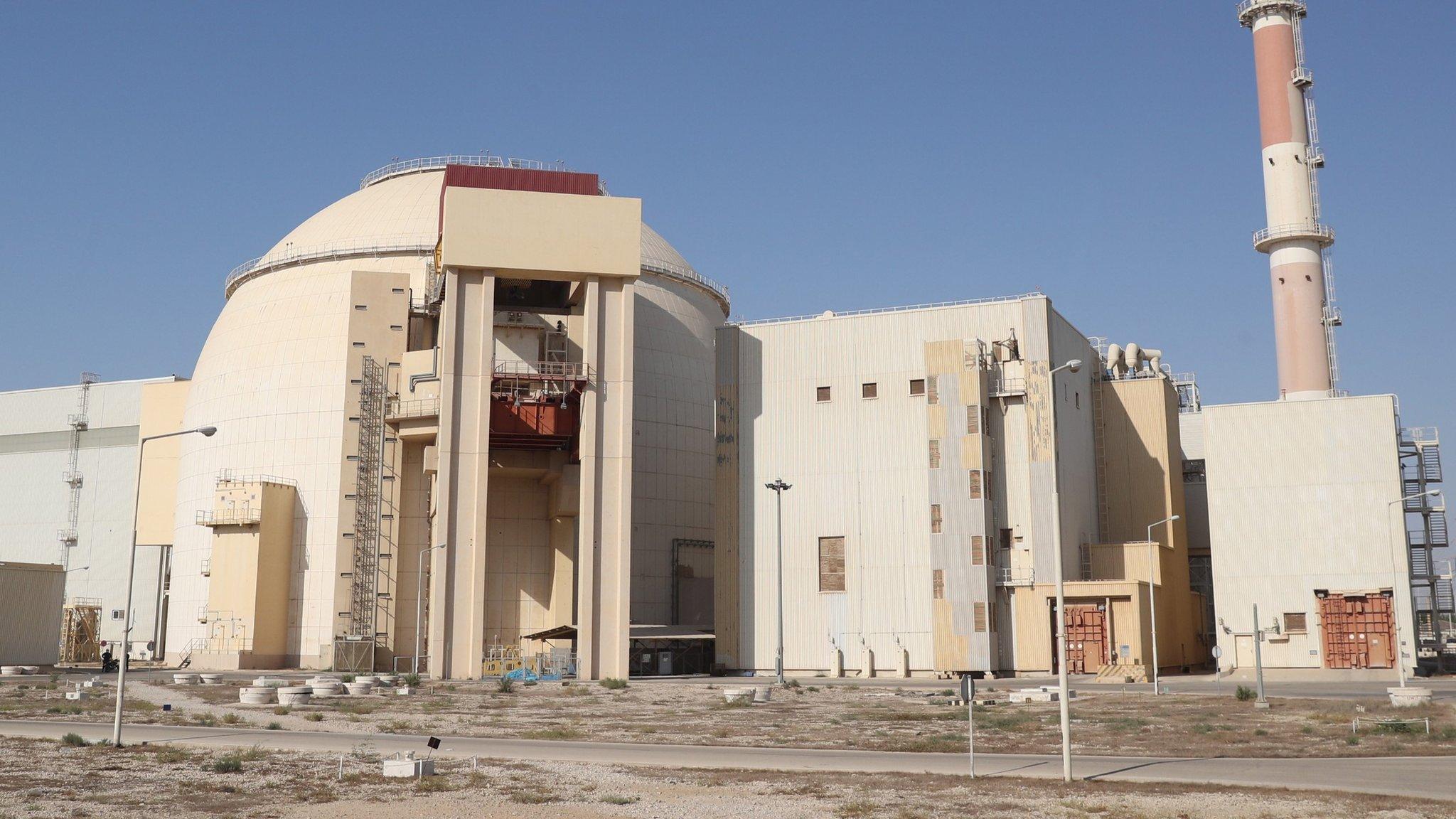Iran nuclear: IAEA inspectors find uranium particles enriched to 83.7%
- Published
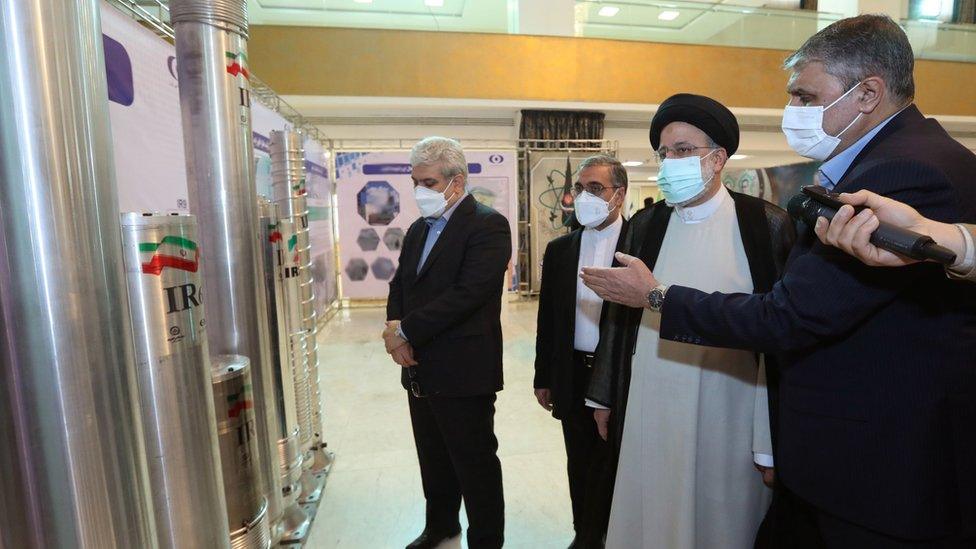
Iran - whose president is pictured here inspecting centrifuges - insists its nuclear programme is entirely peaceful
The global nuclear watchdog has found uranium particles enriched to 83.7% purity - very close to weapons grade - at Iran's underground Fordo site.
In a report seen by the BBC, the International Atomic Energy Agency (IAEA) said it was having discussions with Iran "to clarify the matter".
Iran has said "unintended fluctuations" in enrichment levels may have occurred.
It has been openly enriching uranium to 60% purity for two years in breach of a 2015 nuclear deal with world powers.
The agreement, which was aimed at preventing Iran from developing nuclear weapons, saw the country limit its nuclear activities and allow monitoring by the IAEA's inspectors in return for relief from crippling economic sanctions.
However, it has been close to collapse since then US-President Donald Trump pulled out unilaterally and reinstated sanctions in 2018 and Iran retaliated by increasingly breaching the restrictions.
Joe Biden's administration wants to rejoin the deal if Iran returns to compliance, but indirect negotiations in Vienna, where the IAEA is based, have been stalled for a year.
Uranium is a naturally-occurring element that can have nuclear-related uses once it has been refined, or enriched. This is achieved by using centrifuges - machines which spin at supersonic speeds - to separate out the most suitable isotope for nuclear fission, called U-235.
Low-enriched uranium, which typically has a 3-5% concentration of U-235, can be used to produce fuel for commercial nuclear power plants.
Highly enriched uranium has a purity of 20% or more and is used in research reactors. Weapons-grade uranium is 90% enriched or more.
Under the nuclear deal, Iran agreed not to enrich uranium beyond the 3.67% purity and to halt enrichment altogether at Fordo Fuel Enrichment Plant.
After the US reinstated sanctions, it first resumed enrichment to 20% and then started producing smaller quantities of 60%-enriched material too - a significantly higher level than it had reached before.
The IAEA's latest quarterly report to member states said inspectors found the 83.7%-enriched uranium particles in samples taken at Fordo in late January.
The head of the Atomic Energy Organisation of Iran played down the significance of the discovery and said he expected it to be "put to rest" soon.
Mohammad Eslami told reporters on Wednesday that the sample was "just a particle that cannot even be seen with a microscope" and insisted that "the important thing is the volume of product stored" after enrichment, according to the official Irna news agency.
Iran insists that its nuclear activities are entirely peaceful, but experts have warned that the breaches have theoretically reduced the time it would take the country to acquire enough weapons-grade uranium for one bomb if it decided to do so.
Top US defence department official Colin Kahl told a Congressional committee hearing on Tuesday that this so-called "breakout time" had been shortened from 12 months to "about 12 days".
Experts estimate that "weaponization" - manufacturing a nuclear warhead for a missile - would still take another one to two years.
Related topics
- Published1 February 2023

- Published1 August 2022

- Published9 June 2022
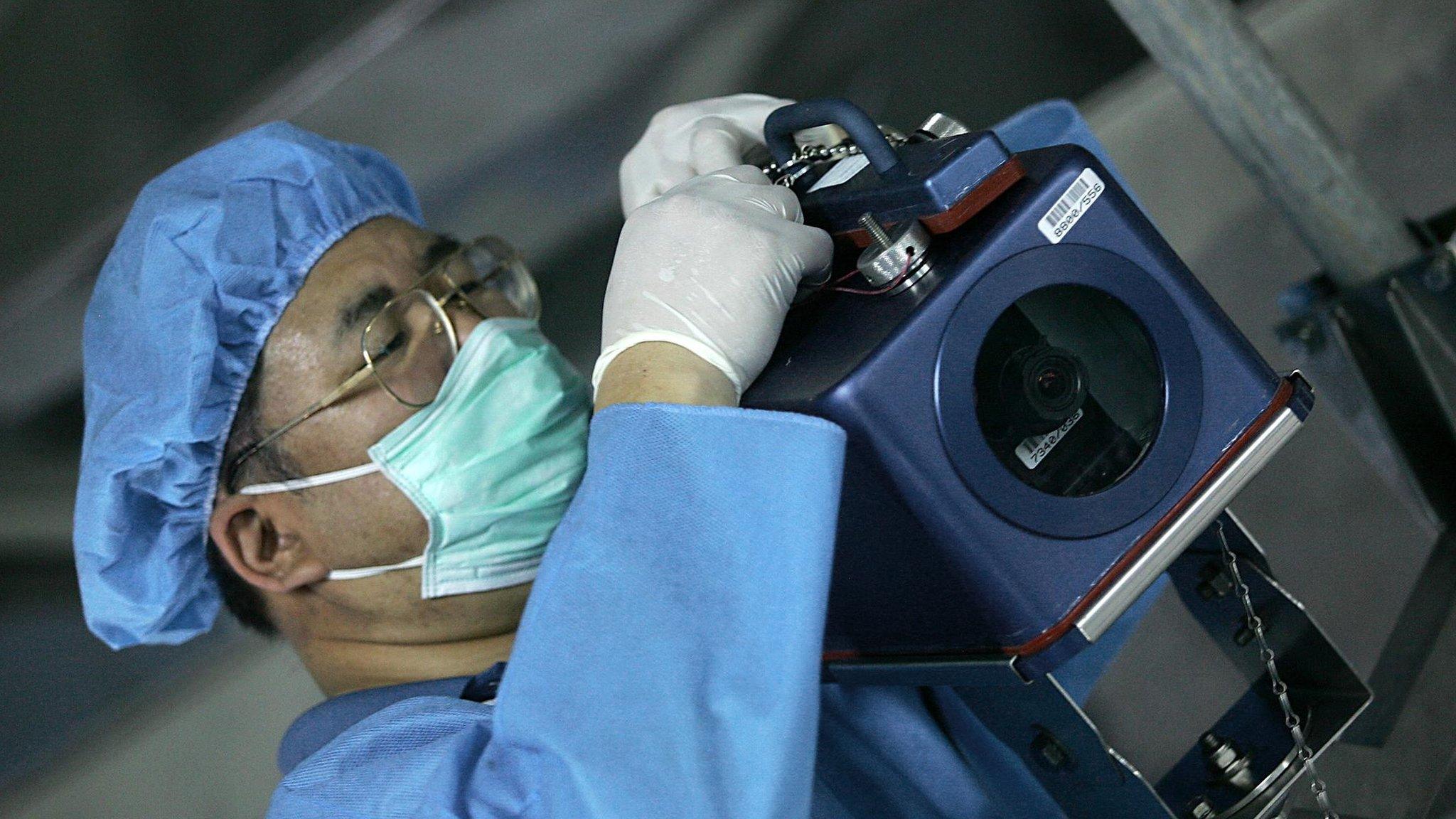
- Published14 April 2021
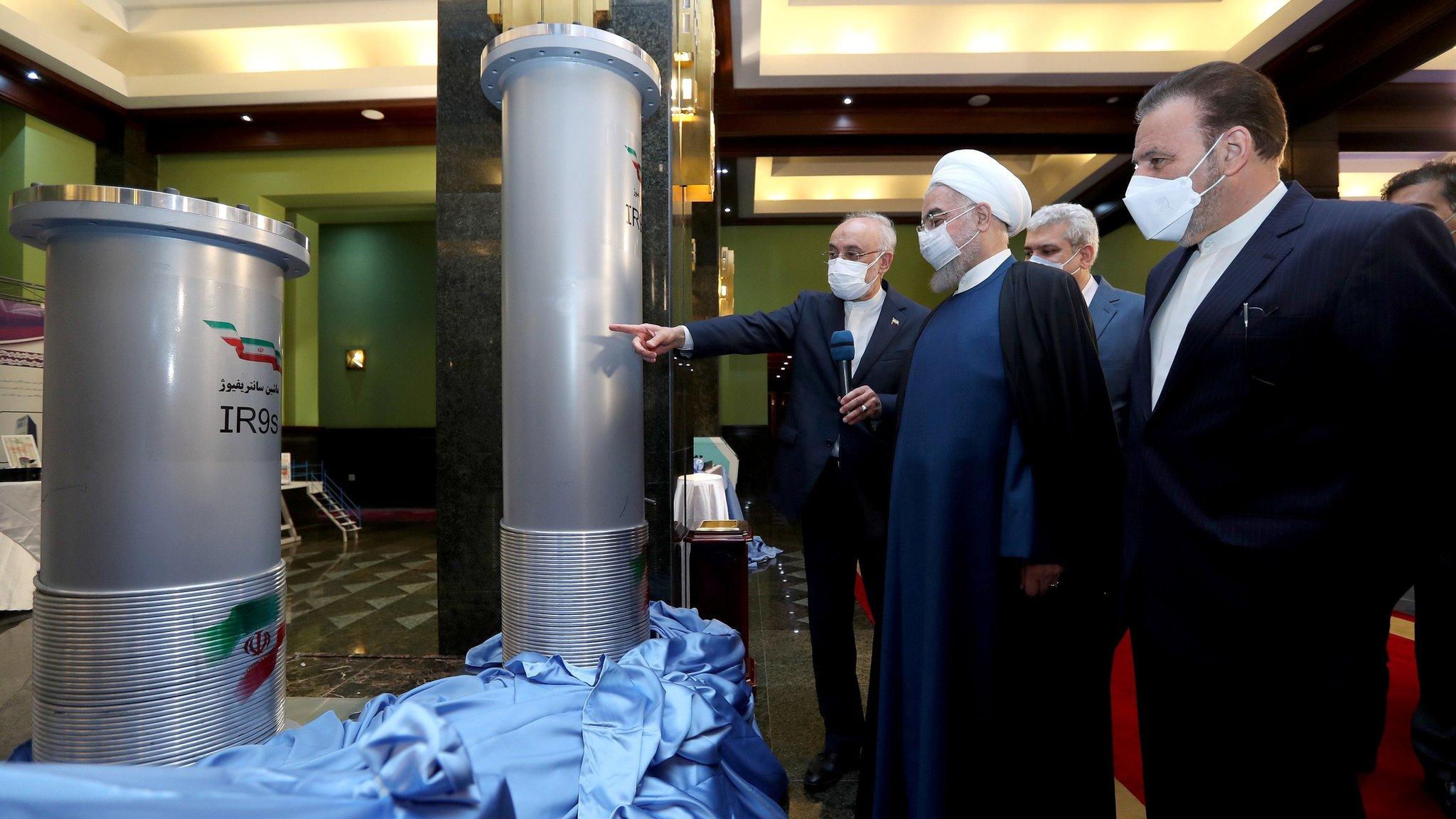
- Published30 April 2021
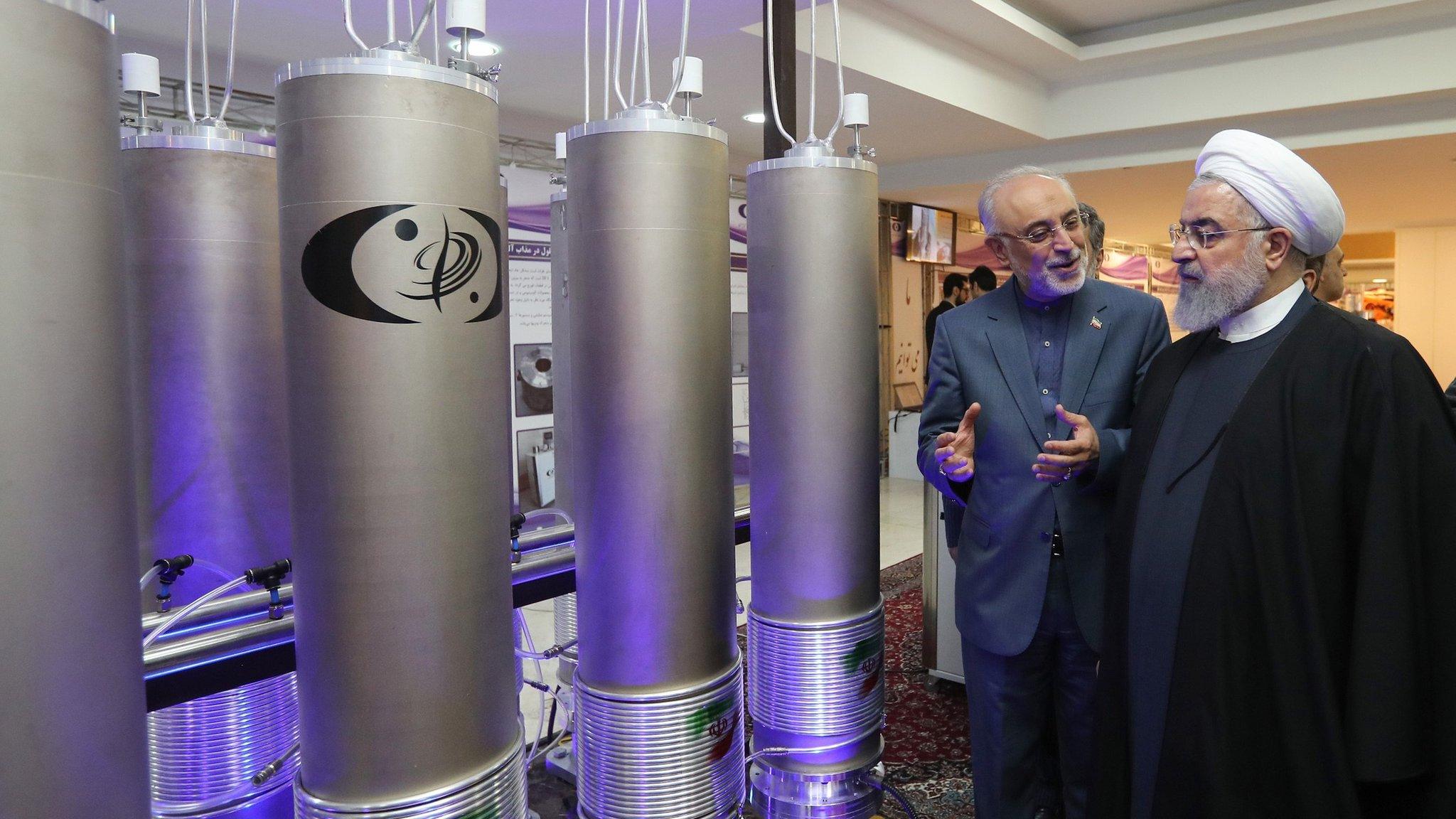
- Published23 November 2021
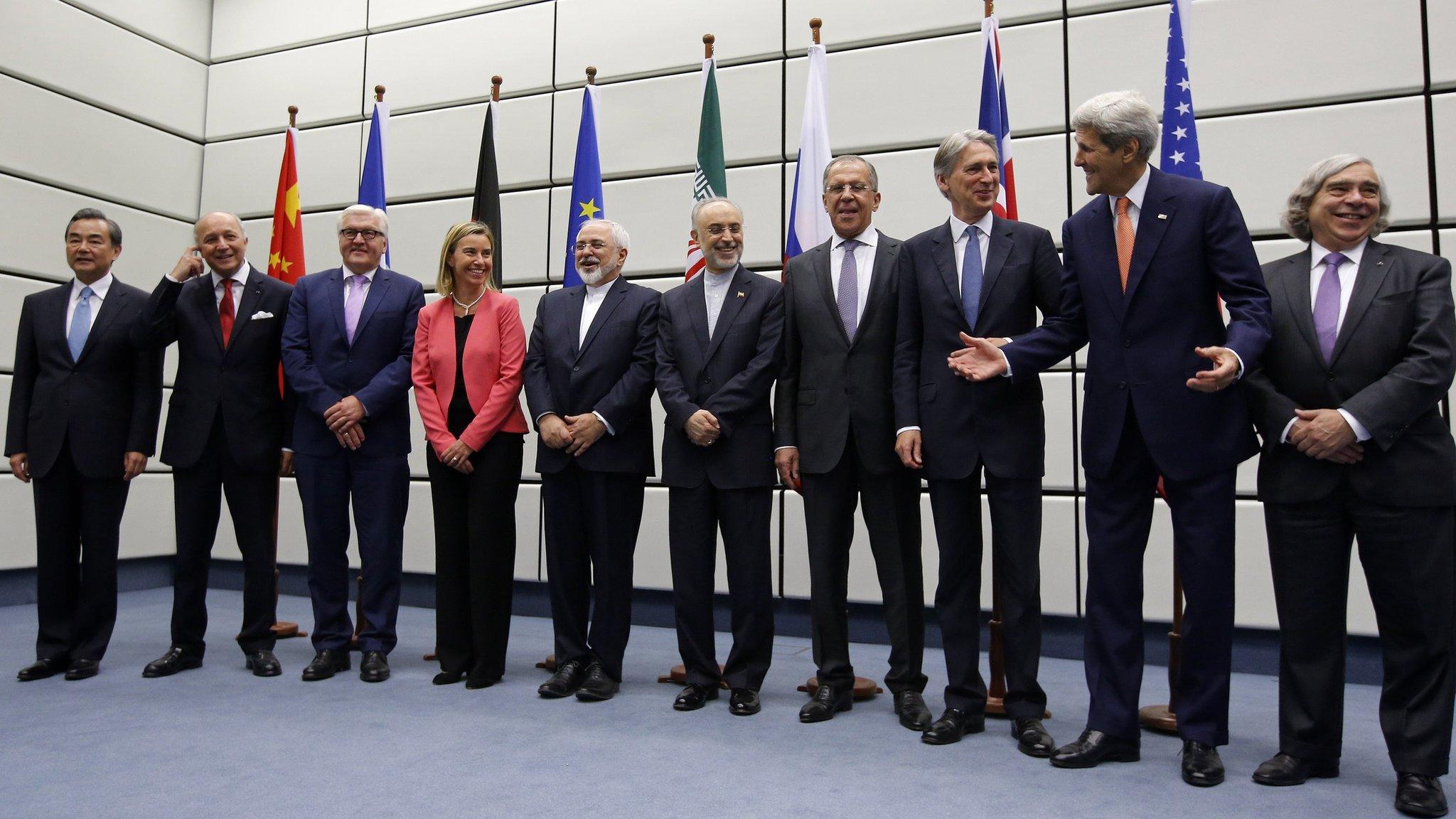
- Published16 November 2021
